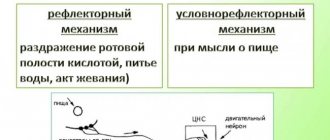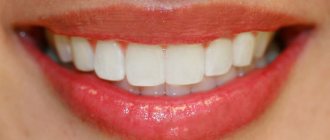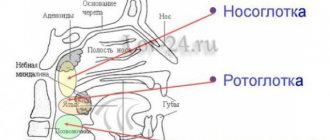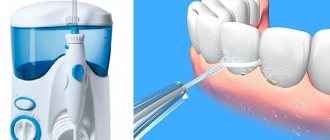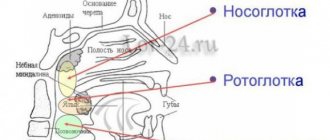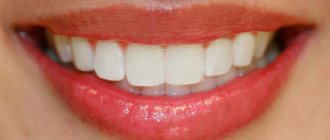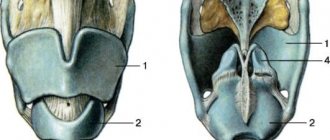We swallow saliva regularly. And we are accustomed to the fact that the oral cavity is always wet and we perceive the cessation of sufficient production of this biological fluid with suspicion. As a rule, increased dry mouth is a sign of some disease.
Saliva is a common and necessary biologically active liquid. Helps maintain the level of immune defense in the oral cavity and digestion of food. What is the composition of human saliva, fluid production rates, as well as physical and chemical properties?
A little biology
Saliva is a biological substance secreted by the salivary glands. Liquid is produced by 6 large glands - submandibular, parotid, sublingual - and many small ones located in the oral cavity. Up to 2.5 liters of fluid are released per day.
The composition of the secretions of the salivary glands differs from the composition of the fluid in the oral cavity. This is due to the presence of food debris and the presence of microorganisms.
Functions of biological fluid:
- wetting the food bolus;
- disinfectant;
- protective;
- promotes articulation and swallowing of food bolus;
- breakdown of carbohydrates in the oral cavity;
- transport - the liquid wets the epithelium of the oral cavity and participates in the exchange of substances between saliva and the oral mucosa.
Mechanism of saliva production
CONTENT
- 1 Structure 1.1 parotid glands
- 1.2 Submandibular glands
- 1.3 Sublingual glands
- 1.4 Tubarial salivary glands
- 1.5 Minor salivary glands
- 1.6 Von Ebner's glands
- 1.7 Nervous nutrition
- 1.8 Microanatomy 1.8.1 Acini
- 1.8.2 Ducts
- 2.1 Aging
- 4.1 Clinical trials/studies
Physical properties and composition of saliva
Biological fluid in a healthy person has a number of physical and chemical properties. They are presented in the table.
Table 1. Normal characteristics of saliva.
| Index | Characteristic |
| Transparency | Transparent, minor inclusions of air, pieces of food. |
| Density | Slightly higher than the density of water, depending on the composition - from 1 to 1.12 g/ml. |
| Color | Normally – absent. |
| Viscosity | Insignificant and unstable, depends on the current state of the body. |
| Taste | Absent. |
| pH | Alkaline – 7.4–8.0. |
The main component of oral fluid is water – up to 98%. The remaining components can be roughly divided into acids, minerals, trace elements, enzymes, metal compounds, and organics.
Development[edit]
| This section needs expansion . |
Aging[edit]
With aging of the salivary glands, some structural changes are observed, such as: [21] [22]
- Reduction of acinar tissue volume
- Increased fibrous tissue
- Increase in adipose tissue
- Hyperplasia and dilatation of ducts [21]
In addition, changes in saliva content are also observed:
- Decrease in the concentration of secretory IgA [21]
- Reducing the amount of mucin
However, there is no overall change in the amount of saliva produced.
Subtleties of saliva secretion
0.5 ml of saliva per minute should be produced in a healthy person during the daytime
The work of the salivary glands is controlled by the autonomic nervous system, centered in the medulla oblongata. Salivary fluid production varies depending on the time of day. At night and during sleep, its amount decreases sharply and increases during the day. In a state of anesthesia, the work of the glands completely stops.
During wakefulness, 0.5 ml of saliva is secreted per minute. If the glands are stimulated - for example, during a meal - they produce up to 2.3 ml of liquid secretion.
The composition of the secretion of each gland is different. When it enters the oral cavity, mixing occurs, and it is called “oral fluid.” Unlike the sterile secretion of the salivary glands, it contains beneficial and opportunistic microflora, metabolic products, desquamated epithelium of the oral cavity, discharge from the maxillary sinuses, sputum, red and white blood cells.
pH values are influenced by compliance with hygiene requirements and the nature of food. So, when stimulating the work of the glands, the indicators shift to the alkaline side, and with a lack of fluid - to the acidic side.
In various pathological processes, there is a decrease or increase in the secretion of oral fluid. Thus, with stomatitis, neuralgia of the branches of the trigeminal nerve, and various bacterial diseases, overproduction is observed. With inflammatory processes in the respiratory system and diabetes mellitus, the secretion production of the salivary glands decreases.
Preparation for the Unified State Exam. Topic "Digestion"
Digestion
1.What are the functions of the human digestive system?
1 mechanical processing of food occurs in the digestive organs; 2 chemical processing of food is carried out with the help of enzymes; 3 movement of food and throwing away undigested food debris; 4 absorption of nutrients, mineral salts and water into the blood and lymph
2.What is the difference between enzymes and inorganic catalysts?
1 one enzyme catalyzes only one type of reaction; 2 enzyme activity is limited to a fairly narrow temperature range; 3 enzymes are active at certain pH values
3. How do enzymes differ from inorganic catalysts?
1 one enzyme catalyzes only one type of chemical reaction 2 enzymes are active only at certain physiological values of solution acidity and temperature 3 rate of enzymatic reactions in decis. thousand times higher than the speed of reactions occurring with the participation of an inorganic catalyst
4. What are the similarities between enzymes and inorganic catalysts?
1 they reduce the activation energy (this energy is necessary in order to force the substrates to react) 2 they do not change the direction of the reaction, but only change the rate of its occurrence 3 in a catalyzed reaction, less energy is always spent than in a non-catalyzed one
5.What is the nature of most enzymes and why do they lose activity as radiation levels increase?
1) most enzymes are proteins; 2) under the influence of radiation, denaturation occurs, the structure of the protein-enzyme changes.
6.What is the specificity of enzymes? 1.
The active center of the enzyme, in its spatial configuration, mirrors the substrate - the substance with which it enters into a contract.2. The enzyme does not come into contact with any other substance. 3. This is why a particular enzyme speeds up a particular reaction.
7. Salivary enzymes are active in the oral cavity, but lose their activity in the stomach. How can this be explained?
1) salivary enzymes are active in a neutral and slightly alkaline environment, which is characteristic of the oral cavity 2) in the stomach, the environment is acidic, therefore salivary enzymes are inactive
8. Why does the enzyme pepsin, which breaks down proteins in the acidic environment of the stomach, lose its activity when it enters the duodenum??
1. Pepsin is active in an acidic environment, 2. in an alkaline environment of the duodenum, it loses its activity
9.Why should food be chewed thoroughly?
1. Well-chewed food is more easily saturated with saliva in the mouth and digestive juices in the stomach and intestines 2. Therefore, chewed food is more easily broken down by digestive enzymes.
10.Why should you try to chew semolina porridge?
1) Porridge contains a lot of carbohydrates. 2) Insufficient time for food to remain in the mouth means that not all carbohydrates will be broken down by enzymes and will not be absorbed by the body
11. What role do the salivary glands play in digestion in mammals? List at least three functions.
1) the secretion of the salivary glands moistens and disinfects food; 2) saliva participates in the formation of the food bolus; 3) salivary enzymes contribute to the breakdown of starch.
12.What is the role of saliva in digestion? What reflexes provide salivation and under what conditions?
1) saliva contains enzymes that break down starch, as well as substances that form a food bolus for swallowing; 2) unconditioned reflex salivation occurs when the receptors of the oral cavity are irritated; 3) conditioned reflex salivation occurs in response to irritation of the visual, olfactory, and auditory analyzers .
13. Find errors in the text. Indicate the numbers of sentences in which errors were made and explain them. 1. The stomach is the widest part of the digestive tract. 2. It is located above the diaphragm on the left side of the abdomen. 3. The gastric mucosa contains many glands. 4. Some of them secrete sulfuric acid, which activates the work of digestive enzymes. 5. These include pepsin, amylase and maltase.6.Food from the stomach enters the duodenum through the muscular sphincter.
Errors are contained in the sentences: 1) 2 - the stomach is located under the diaphragm; 2) 4 - the glands of the stomach secrete hydrochloric acid; 3) 5 - amylase and maltase are not enzymes of gastric juice. These are salivary enzymes.
14. How is neurohumoral regulation of gastric juice secretion carried out in the human body? Explain your answer.1.
nervous regulation is carried out by direct irritation of the receptors of the oral cavity and stomach (unconditioned reflex) 2. nervous regulation is carried out by irritation of the receptors of the visual, auditory, olfactory analyzers (conditioned reflex) 3. humoral regulation: products of the breakdown of organic substances formed in the stomach are absorbed into the blood and through blood affects the glands of the stomach (gastrin)
15. In a sheep, the length of the intestine is approximately 28 times greater than the length of the body, in a person - 6 times, and in a lion - only 3 times. What explains this difference?
1) Plant foods (fiber) are more difficult to digest in the digestive canal than animal foods. Consequently, the length of the intestine depends on the nature of the food consumed: the more plant food it contains, the longer the intestine. 2) The sheep eats exclusively plant food, and it has the longest intestine; The lion eats meat, and it is easily digested and assimilated. Man eats mixed food
16.What is the relationship between the structure and functions of the human small intestine?
1. the intestinal walls have glandular epithelium, the cells of which produce enzymes that promote digestion 2. intestinal villi greatly increase the area of the mucous epithelium, which ensures efficient absorption of nutrients
17.What is the significance of the large length of the small intestine for the digestion of food?
1) The long length of the small intestine allows the completion of the conversion of organic matter from food into soluble compounds 2) The long length of the small intestine facilitates the absorption of nutrients
18.What features of the inner surface of the small intestine ensure intensive absorption of nutrients in it?
1) Intensive absorption of nutrients is ensured by a large suction surface area, which is many times greater than the surface of the human body. 2) The absorption surface area increases due to the presence on the inside of the small intestine of a large number of villi and microvilli covered with epithelial tissue
19. In which part of the digestive tract do symbiotic microorganisms live, what function do they perform?
1 live in the large intestine 2 bacterial enzymes break down fiber, preventing the process of rotting 3 bacteria synthesize vitamins K and B12
20. A large number of bacteria live in the large intestine and constitute normal microflora, their
role.
1. break down fiber and also destroy unabsorbed protein digestion products2. synthesis of B vitamins, vitamin K.3. suppression of the proliferation of putrefactive and pathogenic bacteria
21.Why can treating a person with antibiotics lead to intestinal dysfunction? Give at least two reasons. 1
. antibiotics kill beneficial bacteria that live in the human intestines 2. the breakdown of fiber, water absorption and other processes are disrupted
22.What negative consequences for human health can the use of pesticides have to combat the Colorado potato beetle? Explain why.
1. poisons accumulate in potato tubers 2. eating such potatoes can cause poisoning and other diseases
23. What functions does the liver perform in the human and animal body?
1. produces bile, which is involved in the breakdown of fats; 2. it disinfects toxic substances that are formed in the body or come from food; 3. in the liver, glucose is converted and stored in the form of glycogen; 4. participates in the regulation of the metabolism of fats, proteins, vitamins, hormones and other biologically active substances;5. participates in the production of thrombin, fibrinogen5) is the site of destruction of red blood cells, blood depot functions
24.Functions of bile
1. emulsifies fats, which is necessary for their breakdown by pancreatic lipase 2. promotes the absorption of fat breakdown products in the small intestine 3. stimulates the secretory activity of the pancreas 4. neutralizes the acidic contents of the stomach entering the duodenum 5. enhances intestinal motility 6. promotes excretion a number of foreign and harmful substances to the body
25. What can cause vomiting?
1. entry of toxic substances into the blood 2. irritation of receptors in the mucous membrane of the digestive canal 3. conditioned reflex 4. diseases (hypertension, hepatitis)
26. In practice, it has been observed that when taking medications by mouth, their effect is weaker than when administered intramuscularly or into a vein. Give an explanation for this phenomenon.
1. when taking medications by mouth, some of them are destroyed in the digestive canal and in the liver 2. from the muscles or veins they are more likely to enter the internal environment
27.Can a person eat only fats, excluding protein foods from the diet?
1) It cannot. 2) The absence of proteins will lead to the fact that the following functions will not be performed in the cells: enzymatic, motor, protective, transport. 3) The synthesis of proteins from fats is impossible, because proteins have a more complex structure (their molecules include nitrogen and sulfur).
28.Why should the human diet include food of animal origin?
1) Plant proteins, unlike animals, do not contain all the amino acids necessary for the formation of proteins specific to the human body 2) Animal fats are closer in composition to human fats than plant fats
29. It is recommended to use “seaweed” - kelp - in the human diet. What is the significance of its use in normalizing body functions?
1) Laminaria is a brown algae that contains iodine. 2) Iodine is necessary for the normal functioning of the thyroid gland. Iodine is part of the hormone thyroxine, which in turn regulates metabolism and the functioning of the nervous system.
30.What measures are used to combat parasitic worms?
1. Compliance with personal hygiene rules2. Purification of drinking water3. Sanitary control in slaughterhouses and food preparation.
31.Where is the center of unconditioned reflex regulation of pancreatic juice located and what is the humoral regulation of this process? What is the role of this juice in digestion?
1) the center is located in the medulla oblongata
2) humoral regulation is due to substances entering the blood during the breakdown of food
3) pancreatic juice contains enzymes that break down proteins, lipids, and carbohydrates of food into their monomers, which can be absorbed by the body’s cells
32. People of many professions stand motionless on their feet throughout the working day, so they often develop an occupational disease - dilatation of the veins of the lower extremities. Explain why this is happening.
1) when standing for a long time, the outflow of blood from the veins is disrupted; 2) there is no contraction of the muscles of the lower extremities, which contribute to the contraction of the walls of the veins and the movement of blood upward
33.Where are the centers of food regulation of gastric juice located in the human body? How is unconditioned reflex and conditioned reflex regulation of digestive processes carried out?
1) the unconditioned reflex center is located in the medulla oblongata. Conditioned reflex - in the GM KBP2) the conditioned reflex center ensures the separation of gastric juice when food enters the oral cavity and stomach 3) Conditioned reflex release of gastric juice occurs at the sight, smell, thought of food
34. Find errors in the given text. Indicate the numbers of the sentences in which they are made, correct them. 1. In the oral cavity, food is crushed and moistened with saliva. 2. Saliva contains enzymes and substances that kill germs. 3. Saliva enzymes break down proteins into amino acids. 4. The esophagus produces enzymes that cause chemical changes in food. 5. The movement of food gruel occurs due to the contraction and relaxation of the muscles of the intestinal walls. 6. Absorption of the bulk of nutrients occurs in the cecum. Errors were made in the sentences:
3 - salivary enzymes do not act on proteins, but break down starch; 4 - enzymes are not produced in the esophagus, so their effect is excluded; 6 - absorption of the bulk of nutrients occurs in the small intestine.
35.What is the role of saliva in digestion? What reflexes provide salivation and under what conditions?1) saliva contains
enzymes that break down starch, as well as substances that form a food bolus for swallowing; 2) unconditioned reflex salivation occurs when the receptors of the oral cavity are irritated; 3) conditioned reflex salivation occurs in response to irritation of the visual, olfactory, and auditory analyzers.
36. Indicate the functions of the large intestine of mammals and humans.1
. Formation of burl masses
2. Suction of most of the water3. Normalization of digestion and absorption due to bacterial flora 4. Carrying out the act of defecation.5. bacteria break down fiber and also destroy unabsorbed protein digestion products, ensure the synthesis of B vitamins, vitamin K, suppress the proliferation of putrefactive and pathogenic bacteria
37. Biological scientists measured the length of the digestive system of a predatory and herbivorous animal of equal size. Which of these animals had a longer digestive tract and why?
A plant cell, in addition to the plasma membrane, also has an outer cellulose membrane that protects it from the influence of environmental factors. This membrane is more difficult (and takes longer) to destroy with the help of digestive enzymes than the plasma membrane of an animal cell. Therefore, animal food is digested faster than plant food.
38)
Functions of bile
1. emulsifies fats (turns them into droplets), which is necessary for their breakdown by pancreatic lipase (i.e. activates lipase)
2. promotes the absorption of fat breakdown products in the small intestine
3. stimulates the secretory activity of the pancreas
4. neutralizes the acidic contents of the stomach entering the duodenum
5. enhances intestinal motility
6. helps eliminate a number of substances that are foreign and harmful to the body
39) Why should food be chewed thoroughly before swallowing?
- Chewing food is a mechanical process that increases the surface area of contact with saliva.
- Salivary enzymes help break down complex carbohydrates into simple ones, and lysozyme disinfects food.
Salivary gland diseases: symptoms and causes
Diseases of the salivary glands are divided into inflammatory and non-inflammatory. Inflammatory include acute or chronic sialadenitis. Non-inflammatory ones include cysts and tumor-like diseases.
Sialadenitis
Sialadenitis is an inflammation of the salivary glands of a viral or bacterial nature.
Symptoms of the disease: painful enlargement and swelling of the glands, discharge of pus, deterioration of health.
The cause of the disease is damage to the glands by viruses or bacteria. These can be streptococci, staphylococci, anaerobic bacteria. Sialadenitis often accompanies diseases such as influenza, tracheitis, periodontitis, conjunctivitis, and Coxsackie virus.
Salivary gland cysts
Salivary gland cysts are cavity formations filled with liquid contents and resulting from blockage of their ducts. They can be localized in the floor of the mouth, in the submandibular region, in the preauricular fossa (a small depression behind the ear). Minor salivary gland cysts form on the mucous membrane of the lower lip or cheeks.
The main reasons for the development of a cyst: inflammatory processes, salivary stone disease, mechanical trauma to the gland, compression of the gland by a tumor.
Tumors of the salivary glands
Tumors of the salivary glands are benign and malignant neoplasms arising from the minor salivary glands. The main symptoms: the formation of a compaction in the area of the affected gland, which increases over time. If the tumor is malignant - pain, paralysis of the facial nerve, damage to soft tissues.
The exact causes of salivary gland tumors have not been identified. Inflammatory diseases of the glands, infection with oncogenic viruses, hormonal factors, and employment in hazardous work predispose to the development of oncology.
